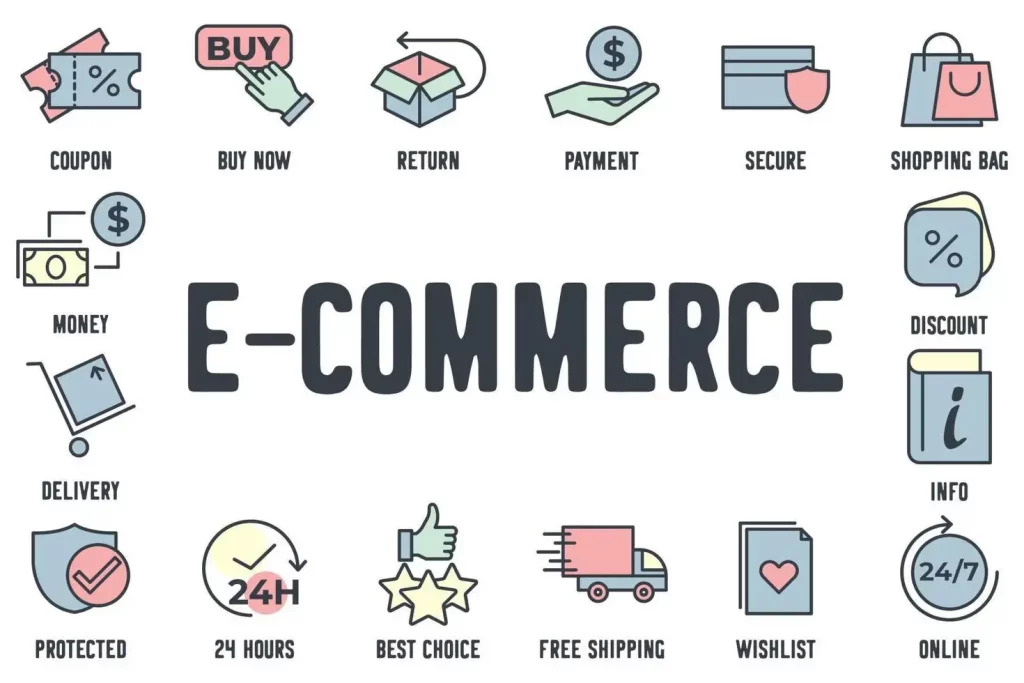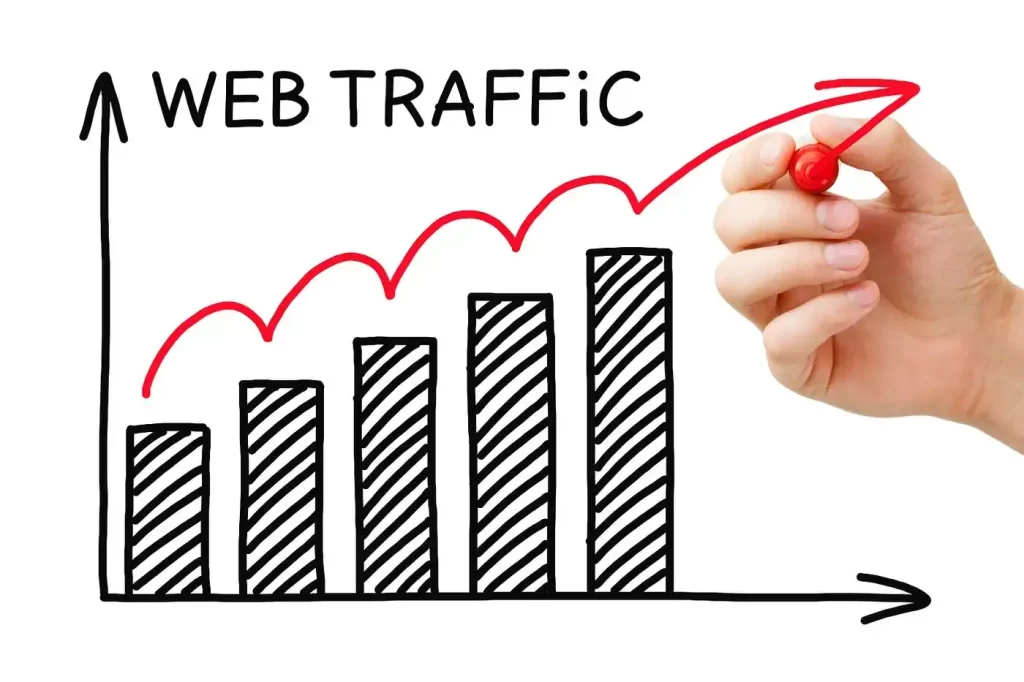
Ecommerce Website Performance Metrics to Track Business Growth
You are aware that e-commerce metrics are critical to your capacity to make well-informed, evidence-based decisions, but which e-commerce metrics should you focus on more?
Concentrate on the KPIs that will most significantly affect your bottom line. However, you may frequently find yourself monitoring “vanity metrics” that have little to no bearing on your company’s overall success.
For instance, time on page is a helpful metric, but it doesn’t provide nearly as much information as other crucial e-commerce metrics, such as conversion rate (CR), average order value (AOV), and return on ad spend (ROAS). Managing a successful online store requires gathering and evaluating ecommerce information. Changes in important metrics might notify you of circumstances that need a quick response.
The ten e-commerce metrics that every e-commerce manager should be concerned about are discussed in this article. We’ll go over the meaning of these metrics and why they’re so important in determining your marketing plan.

What is a Metric?
Any measurable, uniformly defined assessment of a website’s performance is called a metric. Relevant e-commerce data include traffic sources, cart abandonment rate, average order value (AOV), and e-commerce conversion rate.
For good reason, the list of e-commerce measures is lengthy. These rich data sources—Google Analytics, social media, your online store, product pages, homepages, checkout, and shopping carts—all gather quantifiable information that is ready for your analysis and long-term trend analysis.
How Frequently Should I Examine My E-Commerce Data?
As we move on to our list of suggested e-commerce KPIs, you may be wondering how frequently to monitor your metrics.
Every Week.
Every week, you should review certain metrics to make sure your firm is doing well. Website traffic, social media engagement, and impressions are a few examples.
Every Two Weeks.
Zooming out from your weekly measurements, bi-weekly metrics work best for bigger sample sizes because they are less affected by fluctuations that could happen within a week.
AOV, cost per acquisition (CPA), and shopping cart abandonment are a few examples of these bi-weekly KPIs.
Every Month.
Because of traffic patterns or, more likely, your marketing practices, monthly metrics need a longer data window. Email open rate, multichannel engagement, reach, add-to-cart abandonment, and other micro-conversions are examples of these monthly KPIs.
Every Three Months.
According to these periods, the most strategic metrics are those that are measured quarterly.
These quarterly metrics will be the long-tail activities that show your firm is thriving and expanding if your weekly and bi-weekly metrics have shown that it is thriving and surviving. These could include subscription rate, customer lifetime value, and email click-through.

The Importance of Tracking Ecommerce Performance Metrics
Understanding and tracking ecommerce performance metrics is crucial for several reasons. First, these metrics enable businesses to gain a deeper understanding of customer behavior and preferences. By analyzing data, you can uncover patterns that inform product development, marketing campaigns, and customer engagement strategies. Second, performance metrics serve as benchmarks for evaluating business health. They help you assess whether your strategies are effective and if your business is on track to meet its goals.
Moreover, in an era where customer satisfaction is paramount, these metrics allow businesses to identify pain points in the customer journey. For example, a high cart abandonment rate may indicate issues with the checkout process or website usability. Addressing these issues can lead to improved customer experiences and increased conversions. Additionally, tracking sales performance metrics is essential for making informed decisions about resource allocation, marketing spending, and operational improvements. By understanding what drives sales and customer retention, you can allocate resources more effectively and focus on initiatives that yield the highest return on investment.
1. Conversion Rate (CR)
Conversion rate is one of the most critical ecommerce performance metrics, reflecting the percentage of visitors who complete a desired action on your site, such as making a purchase or signing up for a newsletter. A higher conversion rate indicates effective marketing strategies and a seamless user experience. Calculating the conversion rate is straightforward; you divide the number of conversions by the total number of visitors and multiply by 100. For example, if your website received 1,000 visitors in a month and 50 of them made a purchase, your conversion rate would be 5%.
Improving your conversion rate can significantly impact revenue growth. Strategies such as optimizing product pages, improving website speed, and enhancing user experience can help convert more visitors into customers. Additionally, understanding the factors influencing conversion rates, such as site design, product descriptions, and pricing strategies, can guide your efforts to enhance sales performance.
2. Average Order Value (AOV)
Average Order Value (AOV) is a crucial ecommerce metric that measures the average amount customers spend per transaction. It provides valuable insight into customer purchasing behavior and the effectiveness of upselling and cross-selling strategies. By tracking AOV, businesses can better understand how much revenue they generate per order, helping them develop strategies to maximize profitability. To calculate AOV, divide the total revenue by the number of orders. For example, if your total revenue for the month is $10,000 and you’ve received 200 orders, your AOV would be $50.
Improving AOV can significantly boost revenue without the need to increase website traffic. Several strategies can help elevate AOV, such as offering bundle deals where customers receive discounts for purchasing complementary products, setting minimum purchase requirements for discounts, or suggesting related products at checkout. These techniques encourage customers to add more items to their carts, driving up the total order value. By focusing on increasing AOV, ecommerce businesses can not only enhance profitability but also create a more satisfying shopping experience, fostering customer loyalty and repeat business.
3. Customer Lifetime Value (CLV)
Customer Lifetime Value (CLV) represents the total revenue a business can expect from a single customer over their entire relationship with the brand. CLV is a vital metric for understanding the long-term value of your customers and helps inform marketing strategies, customer retention efforts, and resource allocation. Calculating CLV involves multiplying the average purchase value by the purchase frequency and the customer lifespan. For example, if a customer typically spends $100 per transaction, makes three purchases a year, and remains a customer for five years, their CLV would be $1,500.
Focusing on CLV encourages businesses to invest in customer retention strategies. By enhancing customer experiences and fostering brand loyalty, businesses can increase the lifetime value of their customers, making it essential to monitor this metric continuously.
4. Cart Abandonment Rate
Cart abandonment rate is the percentage of shoppers who add items to their online shopping cart but leave the site without completing the purchase. This metric is crucial for understanding potential revenue loss and identifying issues within the checkout process. To calculate cart abandonment rate, divide the number of abandoned carts by the total number of carts created and multiply by 100. For instance, if 500 carts were created and 150 were abandoned, the cart abandonment rate would be 30%.
High cart abandonment rates often indicate problems with the checkout process, such as complicated navigation, unexpected shipping costs, or a lack of payment options. By analyzing the factors contributing to cart abandonment, businesses can implement strategies to improve the checkout experience, such as simplifying the process, offering multiple payment methods, or sending follow-up emails to remind customers of their abandoned carts.
5. Gross Profit Margin (GPM)
Gross Profit Margin (GPM) is a vital metric for ecommerce businesses that measures the profitability of products after considering the cost of goods sold (COGS). This metric is calculated by subtracting COGS from total revenue, dividing that result by total revenue, and then multiplying by 100 to express it as a percentage.
Monitoring GPM is crucial for assessing the overall profitability of an ecommerce business. A healthy GPM signifies that the business can sustain itself financially while providing resources for growth initiatives such as marketing, product development, and expansion strategies. To enhance GPM, businesses can implement strategies aimed at reducing operational costs, optimizing pricing structures to maximize margins, and improving relationships with suppliers for better pricing on materials. By focusing on GPM, ecommerce businesses can ensure long-term financial health and a solid foundation for future growth.
6. Bounce Rate
Bounce rate is a critical metric that measures the percentage of visitors who leave your website after viewing only one page. This statistic plays a significant role in assessing user engagement and the overall effectiveness of your website’s content. A high bounce rate may suggest that your landing pages are failing to resonate with visitors or that users encounter difficulties navigating through your site. To calculate the bounce rate, divide the number of single-page visits by the total number of visits, then multiply by 100 to express it as a percentage.
Understanding and managing bounce rates is essential for enhancing the user experience and driving conversions. A high bounce rate often indicates that visitors are not finding what they expected or are disengaged by the content presented. To reduce bounce rates, businesses can implement strategies such as creating relevant and engaging content tailored to their audience, optimizing page loading speeds to ensure quick access, and designing intuitive navigation to guide users seamlessly through the site. Lowering the bounce rate not only reflects improved user engagement but also correlates with higher conversion rates, making it an essential metric for achieving ecommerce success.
7. Customer Acquisition Cost (CAC)
Customer Acquisition Cost (CAC) is a crucial metric that quantifies the total expenses involved in acquiring a new customer. This includes all associated costs such as marketing expenses, advertising efforts, and sales team initiatives. To calculate CAC, simply divide the total marketing costs by the number of new customers gained during a specific time frame. For instance, if a company invests $5,000 in marketing within a month and successfully acquires 100 new customers, the CAC would amount to $50 per customer.
Monitoring CAC is vital for assessing the effectiveness of marketing strategies and ensuring that customer acquisition efforts yield profitable results. A low CAC indicates that a business is effectively attracting new customers without overspending, which is essential for maintaining a healthy profit margin. However, it is equally important to balance CAC with the quality of customer relationships; acquiring customers at too low a cost can sometimes lead to high churn rates. To enhance profitability, businesses should focus on optimizing their marketing campaigns and targeting specific audiences more efficiently, ultimately improving CAC while fostering long-term customer loyalty.
8. Repeat Purchase Rate (RPR)
The Repeat Purchase Rate (RPR) is a key metric that reflects the percentage of customers who return to make multiple purchases from your ecommerce store. Understanding RPR is essential for assessing customer loyalty and retention, as it provides insights into how well a business is fostering ongoing relationships with its customers. To calculate RPR, you divide the number of customers who have made more than one purchase by the total number of customers, then multiply by 100. For instance, if 200 out of 1,000 customers made repeat purchases, your RPR would be 20%, indicating that a significant portion of your customer base is returning for additional transactions.
A high RPR is a positive sign of strong customer loyalty, while a low RPR may suggest that customers are not finding enough value to return. To boost RPR, businesses can implement strategies such as loyalty programs that reward repeat buyers, personalized marketing campaigns that target previous customers, and exceptional customer service that enhances the overall shopping experience. By prioritizing customer retention and satisfaction, businesses can reduce acquisition costs, foster loyalty, and ultimately improve overall sales performance.
9. Time on Site
Time on site is a vital metric that measures the average duration visitors spend on your ecommerce website during a single session. This statistic is essential for assessing user engagement and gauging interest in your products and offerings. While benchmarks for time on site can vary across industries and businesses, a longer duration typically suggests that visitors find your content engaging, relevant, and worth exploring. Tools like Google Analytics are instrumental in tracking this metric, providing insights into user behavior and interactions on your site.
Improving time on-site can significantly enhance user engagement, leading to increased conversion rates. A longer engagement period often correlates with a higher likelihood of making a purchase, as it reflects visitors’ interest in your products. To boost time on site, businesses can implement various strategies, such as creating high-quality and informative content, optimizing product descriptions, and integrating interactive features like videos or quizzes that encourage users to explore further. By prioritizing a positive user experience and engaging content, businesses can effectively enhance their time on site, ultimately driving sales growth and building customer loyalty.
10. Return on Ad Spend (ROAS)
Return on Ad Spend (ROAS) is a crucial metric that helps businesses evaluate the effectiveness of their advertising efforts. By calculating the revenue generated for every dollar spent on advertising, ROAS provides a clear picture of how well marketing investments are translating into sales. The formula is simple: divide the total revenue from ads by the total ad spend. For example, if a campaign yields $10,000 in revenue with a $2,000 investment, the resulting ROAS would be 5, indicating that each dollar spent on ads generated five dollars in revenue.
Monitoring ROAS is essential for assessing marketing performance and identifying successful strategies. A high ROAS signifies effective advertising efforts, while a low ROAS signals the need for optimization. Businesses can enhance their ROAS by refining ad targeting, improving creative content, and regularly analyzing campaign performance to make informed, data-driven adjustments. Ultimately, optimizing ROAS can lead to more efficient marketing spend and increased profitability.

Conclusion
In the rapidly evolving landscape of ecommerce, the importance of tracking sales performance metrics cannot be overstated. These metrics serve as essential tools for businesses aiming to drive growth and improve overall performance. By closely monitoring key indicators such as conversion rates, average order value, and customer lifetime value, companies gain crucial insights into consumer behavior and market trends. Understanding these metrics allows businesses to pinpoint areas that require enhancement, whether it’s streamlining the checkout process to reduce cart abandonment or optimizing marketing campaigns to lower customer acquisition costs.
Additionally, metrics like gross profit margins and return on ad spend (ROAS) provide a clear picture of profitability, enabling businesses to make informed financial decisions. Repeat purchase rates and time on site are equally important, as they reflect customer loyalty and engagement, essential factors for long-term success. By leveraging ecommerce performance analytics, businesses can adapt to changing market dynamics and consumer preferences, ensuring they remain competitive in a crowded marketplace. Ultimately, a robust strategy centered on tracking and analyzing these performance metrics is vital for achieving sustainable growth and delivering exceptional customer experiences in the digital realm.
FAQs
What is e-commerce performance?
The performance of an online store in terms of sales, customer engagement, website traffic, conversion rates, and other important indicators is referred to as e-commerce performance. In essence, it measures how successfully an online business generates revenue through digital channels overall.
What is ecommerce analytics?
The act of gathering, evaluating, and interpreting data from an online store to learn more about customer behavior, website performance, and sales trends is known as ecommerce analytics. This information enables businesses to make well-informed decisions that will improve online shopping experiences and increase sales.





